|
World View: Africa
Forging
a representative gay liberation movement in South Africa
The
history of gay liberation in South Africa reflects the history of the country: South African gays were divided along race,
class and gender lines despite their common experience of sexual oppression.1 For decades, the public face of the South African
gay liberation movement was white, middle-class and male and as a whole it failed to link itself to the broader liberation
struggle. From today's vantage point the gay movement was at best equivocal in opposing apartheid, and at worst complicity
in supporting it.
And in common with similar movements in other parts of the world, gay organisations in South Africa
struggled to reconcile providing emotional and social support for their constituency with the need for a political voice.
Until the late 1980s a black gay presence was muted. It would seem that - denied access to the bars, clubs and other spaces
taken for granted by their white compatriots - black gays used gay organisations as spaces to socialise and seldom adopted
an overtly political stance. Accordingly, gay organisations had a spectrum of political views, from complacency to militancy.
And race was not always the determining factor for an organisation's political complexion.
But the launch in 1994 of the
National Coalition for Gay and Lesbian Equality laid the ground for a more unified and representative movement. Swept along
by the momentum of constitutional reform, the support of the African National Congress, and the more open political climate
of the transition from apartheid to democracy, the coalition has come closer than previous formations to authentically representing
the majority of the country's gays. The desegregation of cities has also stimulated a more visible black gay presence. For
the first time young people have been able to escape the conservative mores of the townships and their poor social facilities,
to create more neutral and gay-friendly spaces in the cities.
But as gay rights activists Mazibuko Jara and Sheila
Lapinsky argue, there is no room for complacency. The race, gender and class inequalities which still divide South Africans
need to be reconciled with a sexual identity which unites them. This will involve the deliberate construction, through careful
use of resources and appropriate strategies, of a new and more inclusive South African gay identity. It will mean catering
in the first instance for the poorer sectors of the community, and for lesbians. The outcome may not reconcile all of the
gay community's various interests - that may simply not be possible given the divisions of the past - but there will be a
more authentic movement.
Some scenarios
December 3 1994 - The National Coalition for Gay and Lesbian
Equality (NCGLE) is launched by 77 men and women representing 41 organisations at a conference in Johannesburg.
June
1997 - An African lesbian, in her mid-thirties and from semi-rural Mpumalanga, walks to the podium at the NCGLE's third national
conference and proposes a resolution committing the organisation to reach out to gay people in rural areas. The resolution
is unanimously adopted by the delegates, 70 per cent of whom are black (African, Coloured and Indian) and 40 per cent of whom
are women.
Early 1994 - Mark Gevisser, journalist and gay activist, writes
Back to top
“This country's lesbian and gay sub-cultures have not yet
matured to the point of being able to constitute an effective, coherent and united political minority.” (1994:82)
These
scenarios will be the framework for our interrogation of the roles of race, gender and class distinctions in the history of
South Africa's gay liberation movement. Among the questions we ask are:
- To what extent are Gevisser's comments still true in 1998?
- What is our (gay) history? Where have gay South Africans come from?
- Which organisations were there in the past? What issues and campaigns
did they take up and how did their racial, gender and class compositions influence their political stances?
- Is it possible to build a representative movement across the divides
of race, class and gender?
In answering them we will selectively survey the history of organisation
in the South African gay community; analyse the experiences of lesbians and black gays in organisations; and explore ways
for present-day gay organisations to build a more representative movement.
Gay organisation: social versus political needs
In South Africa, as in other countries, there is an enduring
tension in gay organisations between providing emotional support and safe places to socialise and being a vehicle for political
mobilisation. Much of the written history and records of gay organisations reflects the latter role, but - particularly in
black communities, which were predominantly poor - many gay organisations were established for socialising and support. By
contrast, white, middle-class, gay men were able both to enter and create a subculture quite easily. Their economic power
brought with it, among other benefits, access to space and education, and the power to create alternatives, including overtly
political ones. (Gevisser 1994:20)
"Pink"
is "white": the 1960s and 1970s
In 1968 gays established the Law Reform Movement (LRM) when the government proposed
changes to the Immorality Act which would criminalise homosexuality. It was the first stirring of political action in what
had been a largely invisible and quiescent community. The LRM raised funds and appointed a legal team to make representations
to the parliamentary select committee which was handling the legislation. As a result of their efforts and those of individual
gay people, the legislation was dropped, although the existing Sexual Offences Act was later amended to criminalise public
displays of affection between men.
Though the LRM was the crucible for political action for gay rights
in South Africa, it warrants critical scrutiny. The late 1960s were marked by the state's escalating repression of anti-apartheid
dissent, and intensified racial segregation. The LRM was made up entirely of whites, the majority of whom were wealthy men
whose political intent did not extend beyond resisting the single issue of anti-homosexual legislation. Their limited response
was partly due to the fact that the government itself had defined homosexuality as a white issue - probably because the white
gay community was more visible. Had the government targeted black gays, it is nevertheless unlikely - given racial segregation
and differing political perspectives - that there would have been significant solidarity and political links between black
and white gays.
By the 1960s, most black opposition to apartheid had been crushed, but later in the decade and in the
early 1970s there was a revival of anti-apartheid political activism amongst workers (who formed unions) and white students,
spearheaded by the left-leaning National Union of South African Students (NUSAS). An attempt was made to found a South African
Gay Liberation Movement on the white campus of the University of Natal, Durban in 1972, but it collapsed after three weeks
in the face of police intimidation.
In the 1970s, a series of white gay men's supper clubs were set up in the larger
cities, and a new subculture emerged around them. Large numbers of gay Afrikaner men migrated from the platteland to these
cities where they found safer spaces and more tolerance. Lesbian subcultures emerged at this time too, in the form of small
networks of women involved in sports, parties and friendship, also largely confined to white women. Gay male culture was most
established and visible in the Coloured community of Cape Town where it centred around drag shows, hair salons and parties.
Very little is known about lesbian or gay male subcultures in African and Indian communities in this period, which may reflect
the atomisation of gay life, the prior claim of the anti-apartheid struggle on people's public commitment, or, more likely,
a dearth of research.
Back to top
The 1980s watershed
In 1982, the nominally non-racial
Gay Association of South Africa (GASA) was formed mainly by white, middle-class men and functioned largely as a social meeting
ground for them. But it did have some black male members, who sought a home in the organisation in the absence of alternatives.
GASA was the largest and most sustained gay organisation yet and spawned several smaller groups organised around interests
like sports, religion and counselling.
Because of the broadness of its membership, GASA eschewed a political stance
and failed to link the struggle for gay equality with the struggle against apartheid - a choice which became more and more
untenable as opposition to apartheid intensified. Many other predominantly white organisations were similarly failing to align
themselves, even though under the United Democratic Front (UDF) a non-racial political movement was being forged.
In
1986, one of GASA's few black members - Simon Nkoli - was charged with treason along with 21 others in what became known as
the Delmas Treason Trial, after the town in which the case was heard. GASA's internal political contradictions and the dominant
political conservatism of its white members prevented it from expressing its support for Nkoli and the other trialists, and
as a consequence GASA was expelled from the International Lesbian and Gay Association in 1987. Nkoli's experiences and those
of the other black men in GASA demonstrate that this was inevitable, and highlight some of the difficulties of trying to build
a non-racial movement in the politically-polarised 1980s. Nkoli writes
“The best thing about the membership was
that your pink card got you into clubs at discounted prices. But the only place I managed to get into was somewhere in Jeppe
St [in Johannesburg]. I was the only black person there and I felt so intimidated that I never went back.” (Gevisser
1994:52)
In response to the conservatism of their white counterparts, black members of GASA formed themselves into
the Saturday Group, but were finally prevented from meeting at the GASA offices as they "made too much noise". White members
of GASA also objected to the preparation of food in the offices and seemed unable to take into account the fact that black
gay men were still denied entry into the clubs and bars which white men were free to frequent.
Other black gays in
South Africa had similar experiences to Nkoli's.
Hein Kleinbooi felt alienated as a black gay man in the arena of
student politics. He joined the Gay and Lesbian Association (GALA) on the campus of the University of Cape Town,
“in
search of comfort and the support of others ... But I did not get the support ... What made my sense of alienation even more
acute was that the meetings seemed to be great fun for everyone else.” (Kleinbooi 1994:265)
For example, videos
of the British television series Out on Tuesday were shown and Kleinbooi did not identify with the culture or the humour:
... "the white yuppie culture ... seemed foreign from my own experience". (Kleinbooi 1994:53)
Disenchantment with GASA
and other organisations dominated by whites led, in the mid- and late-1980s, to the formation of several new gay organisations.
In 1986, former members of GASA set up the Rand Gay Organisation, a small black-led group which lasted for only a year. Also
in 1986, another group of disillusioned former GASA members set up Lesbians and Gays Against Oppression (LAGO) in Cape Town,
believing that the prevailing repression, and the state of emergency in particular, demanded a response from the gay community.
LAGO became OLGA (Organisation of Lesbian and Gay Activists). It aligned itself with the charterist political tradition of
the African National Congress (ANC) and affiliated to the UDF. OLGA's political identification with the anti-apartheid movement
was not reflected in its membership, which was confined largely to white middle-class intellectuals.
Back to top
The largest organisation to emerge in the 1980s was the non-racial
Gays and Lesbians of the Witwatersrand (GLOW).2 The majority of its members was black and it was founded, in 1988, for young
black people (mainly men) to meet each other. Disenchantment with the apolitical stance of the mainstream gay movement coalesced
around GLOW and it became increasingly strident. In 1991, it organised South Africa's first gay pride march, which was also
the first public expression of the gay people's political demands. The Lesbian Forum was set up in GLOW; it served a social
and support function rather than a political one.
In Cape Town a new organisation was also formed. Midi Achmat comments
on why she and others founded the Association of Bisexuals, Gays and Lesbians (ABIGALE)
“Black working-class
people didn't feel at home in GASA because it was so white and middle class. Then OLGA came along, and we didn't feel at home
there either ... Black people who went along found it too intellectual ... It was all politics and no support.” (Gevisser
1994:79)
ABIGALE was established as a social support group - intended primarily for blacks - but later became more
involved in political activities. Its members were predominantly Coloured, working class and male. A recruitment drive in
the African township of Khayelitsha failed to change the racial composition of the organisation.
There were also sporadic
attempts at many universities (mainly those which had a majority of white students) to establish progressive gay organisations.
These met with greater or lesser success, but never succeeded in attracting significant numbers of black members.
Thus,
in the period leading to South Africa's political transition, the gay movement here was crossed by several persistent fault-lines
- the dominance of white middle-class men (irrespective of political persuasion); a faltering black presence; and the tension
between organisations' social support and political roles. The result was a refraction of political perspectives.
Lesbians
Lesbians were not visible in the gay organisations
of the 1970s and 1980s. While GASA's male members did stymie the efforts of its few female members to raise the organisation's
lesbian profile, lesbian organisations themselves seem to have been plagued by the very same problems as organisations in
which men dominated.
In the early 1980s in Durban, Sunday's Women was established. Comprised predominantly of white
women, the group met to discuss lesbianism and feminist issues and published a monthly newsletter. When some members proposed
making connections with the anti-apartheid movement, there was a split between those who sought social support and those who
wanted to assume a more prominent political profile.
Black lesbians seldom linked up with the mainly white lesbian
organisations, not only because they felt excluded, but also because exposing themselves as lesbians may have alienated them
from their more conservative black comrades in the anti-apartheid struggle.
Back to top
Catharsis: the political transition and the formation of
a national gay and lesbian structure
Due largely to lobbying behind the scenes during the negotiations which led
to the drafting of the new constitution and the 1994 elections, activists from OLGA and GLOW ensured that what has become
known as "the equality clause" - which outlaws discrimination on the basis of sexual orientation - was included in the interim
constitution.3 They used the argument - irrefutable in the light of South Africa's history - that human rights were indivisible
and that if democracy served only to ensure racial equality before the law, then the human rights of a range of marginalised
groups of people would have been neglected.
Several minority political parties and right-wing religious groupings
opposed the inclusion of the equality clause and began mobilising for its removal from the final constitution. Gay activists
responded by forming the National Coalition for Gay and Lesbian Equality (NCGLE) in late 1994 at a conference where 41 gay
organisations from across South Africa were represented. The coalition's mandate and the basis for its political platform
was to secure the equality clause.
Ironically, the NCGLE may have been blessed by history. It had a high profile, but
its celebrated success in keeping the equality clause at the centre of the constitution had little to do with the strength
or level of political mobilisation of the gay community, and more with the times. In fact, the embryonic coalition had to
contend with a weak gay political movement, a lack of infrastructure and finance and the absence of strong black and women's
organisations. But while the clause was being negotiated, the coalition could take advantage of the majority party, the ANC's,
commitment to human rights and a democratic constitutional order, and the coming out of several prominent anti-apartheid activists
and their involvement in progressive gay organisations (mainly OLGA and GLOW). And they had a sophisticated lobbying strategy,
which they used first in the negotiations for the interim constitution3 and later in Parliament where the final constitution
was agreed upon.
Constructing an authentic
South African gay identity
The NCGLE has had to make a movement out of disparate elements, which it has done by
raising funds from international and local donors to create an infrastructure, through a programme to stimulate the formation
of local branches, and by providing leadership training. The relocation of its offices to townships and inner-city areas has
increased the confidence of black gays. It has been able to take advantage of the equality clause to advance gay rights and
its campaigns have led to the decriminalisation of same-sex sexual practices and the drawing up of legislation which outlaws
discrimination in the workplace and other spheres. These successes have won the coalition new constituencies, helped by the
more libertarian climate since the elections of 1994. The formation of black lesbian organisations and interest groups in
Pretoria, Johannesburg and Cape Town may also signal the increased visibility and influence of lesbians in the gay movement.
The
coalition now has more than 75 affiliates throughout the country, including lesbian organisations, social groups, political
organisations and organisations based around religion, HIV/AIDS, support and counselling, media, and sport. These cover various
class, race and gender groups and together they form the nucleus of a gay movement in South Africa.
Affluent, white
gay men are still, however, the most influential even though they are not in the majority. The Gay and Lesbian Pride Parade
Committee in Johannesburg is a good example of how this influence has played itself out. The pride march usually takes place
in the city centre, which is a mainly black residential area. But some white gays have not wanted to participate in the march
because they are afraid of the crime and violence associated with the inner city. These feelings prompted a debate about whether
the march should relocate to the safer, wealthier - and whiter - suburbs.
The move has been resisted, but the debate
is an indication that fault lines still exist in the movement. These rather prosaic struggles will continue in the coming
years. In addition, the movement faces other challenges: the realisation of the constitutional promise of equality, dignity
and justice for all gay people.
Back to top
Class and sexuality
Which interests dominate the
movement at the moment? One could argue that some of the NCGLE's most celebrated victories, such as the extension of medical
aid schemes to the partners of gay employees, do not benefit poor or unemployed gays. What issues, then, are important to
these groups? How are lesbians' interests advanced and taken up? Does the decriminalisation of sodomy really change anything
for lesbians? To its credit, the coalition's leadership and several of its affiliates have been able to identify and understand
the interconnection of the gay struggle and the broader issues of freedom and development. Not without political fights and
tensions, however: the movement's present stance is not entirely secure and the movement itself still has many weaknesses.
The
majority of gay people in South Africa are poor. They remain marginalised from the social and economic mainstream and live
outside of the emerging gay rights movement (which is, in turn, poorer without them). This knowledge should underpin future
NCGLE work and that of locally-based gay organisations. It will help build a gay movement which is as much a home for poor
gays as it is for those with access to employment and social services.
A gay activist leadership base, which is representative
in terms of race, gender and class, is required, and will only be achieved through strategic recruitment and the education
and training of a new leadership. Mobilisation of this kind needs to take sectoral interests and issues into account (such
as equal age of consent, safe social spaces for lesbians and young gays, attitudes to disabled gay people). Services (legal,
health, counselling and so on) must be made more accessible to the gay community broadly and particularly in poor areas. The
construction of a South African gay identity is also necessary for building an inclusive gay movement, and the above will
foster its development.
The coalition will also have to strive to change the attitudes of society at large towards
gays. Its work with the ANC is instructive in this regard. One of the greatest threats to the permanence of full citizenship
rights for all gays is the prevailing belief that homosexuality is unAfrican. For as long as the perception persists that
most gays are wealthy white men, life will be harder for gay people in the townships. Furthermore, without the support of
the majority of African people for equal rights for gays, no one - not even the powerful - can be confident that they will
ever live in a society that is free from discrimination.
In closing and looking back
How was it possible that the NCGLE was able to succeed in presenting a more
united and representative face for the gay community, when other organisations - even those that were politically progressive
- failed? Much was owed to the times. In the 1990s, after a long period of germination and growth, black gay organisations
came to fruition. In part because the desegregation of the major urban centres allowed young gays to escape township life
and create safe and tolerant spaces in the city centres, and in part because of the political transition, which despite some
uncertainties allowed minority groups to emerge into previously undefined and unrestricted space. The coalition's success
in persuading the major political parties to retain the equality clause in the constitution won it many allies, black and
white. At the same time, the end of the anti-apartheid struggle, which had so dominated the life of black South Africans,
allowed people to come forward and press more personal claims, previously confined to the shadows. The support of the ANC
for a wide-ranging equality clause also affirmed the gay community. And members of the coalition are of a younger, more confident
generation, less scarred by apartheid and its divisions than their predecessors.
But the coalition's real success
- in contrast to the organisations that went before it - is in the recognition that an authentic South African gay identity
needs to be consciously constructed and that partisan choices need to be made. It has actively sought to balance its leadership
and to seek out and sustain gay organisations in the townships and rural areas. It has also retained the support of white
intellectuals and activists. In this endeavour it may have lost the support of some of the traditional cohorts of the gay
liberation movement, but it is ultimately more authentic and potentially more enduring.
References
Gevisser, M. 1994. A different fight for freedom: a history of South African lesbian and gay
organisation, the 1950s to the 1990s. In Defiant desire: gay and lesbian lives in South Africa. M. Gevisser and E. Cameron.
Johannesburg: Ravan Press
Kleinbooi, H. 1994. Identity crossfire: on being a black gay student activist. In Defiant
desire: gay and lesbian lives in South Africa. M. Gevisser and E. Cameron. Johannesburg: Ravan Press
Footnotes
- In this article the term "gay" is used to describe both gay men and
lesbians. A distinction has only been made between gay men and lesbians where accuracy demands.
- The Witwatersrand is the name given to the area surrounding Johannesburg.
- The interim constitution was negotiated by political parties between
1990 and 1994. It provided the basis for the first democratic elections in April 1994, in which a Constituent Assembly (CA)
was elected. The CA produced a final constitution in May 1996.
Back to top

lesbian visibility
Inadequate Lesbian visibility is a chronic problem of the
gay rights movement world wide. All gay activist organisations which are not explicitly Lesbian are male-driven, and struggle
to attract and retain female participation, especially at the grass roots level.
This problem is both reflected in,
and perpetuated by, the gay media. The vast majority of publications are male-dominated, if not "for men only". From all appearances,
only one or two out of every ten publications are Lesbian(-oriented), and the others have less than 10% Lesbian content. In
South Africa, for example, of the four or five (?) gay papers / magazines, only one (Womyn, formerly Women on Women) is exclusively
female, and it is of extremely recent vintage. Even the movies featured in the much-touted annual Gay and Lesbian Film Festival
demonstrate this frightening imbalance.
It is a moot point whether women choose to maintain a low profile, or are
systematically sidelined by their more flamboyant male counterparts, and much energy could be wasted splitting hairs in this
regard. What is, however, abundantly clear, is that male dominance of the gay rights movement is merely symptomatic of the
historical marginalisation and disempowerment of women across the board - socially, economically and politically.
Many
reasons have been advanced for this marginalisation but, in the final analysis, the reasons are really not important. What
matters is that humankind cannot advance as a whole, if one half of it is kept back, for whatever reason, and by whatever
means; so it follows that, for so long as women do not hold an equal position in the gay rights struggle, its gains are largely
meaningless, in the context of the wider human rights landscape.
It is therefore crucial that a concerted effort be
made by those who are sufficiently enlightened and equipped for the task, to redress the imbalance. Behind the Mask hopes
that its new-look Women's Section is a step in the right direction. Please send your stories, comments, poems, and other items
of interest, including information about coming events, to , and let this section be the gateway through which, as Lesbians or womyn
who support other women you begin to assert yourselves and, perhaps, lead our heterosexual sisters along the path to self-actualisation.
Links
Kenya: Women Husbands
In March 2002 a Kenyan woman went to court, demanding the right
to inherit a piece of land belonging to her deceased 'husband' - another woman, according to a report from the BBC.
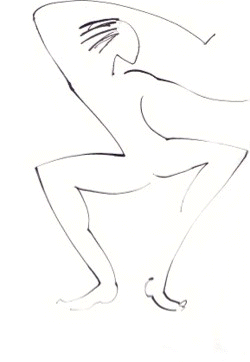
Profiles
profile: Payne Karabo Phalane
painter, sculpture, and digital artist
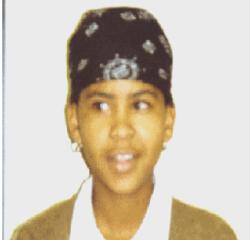
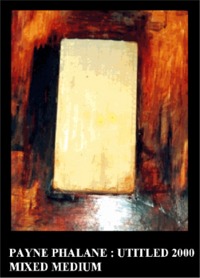
Interview with Nonhlanhla Mkhize
activist and manager - Durban Lesbian and Gay Community
& Health Centre
profile: Palesa Beverley Ditsie
activist and filmmaker
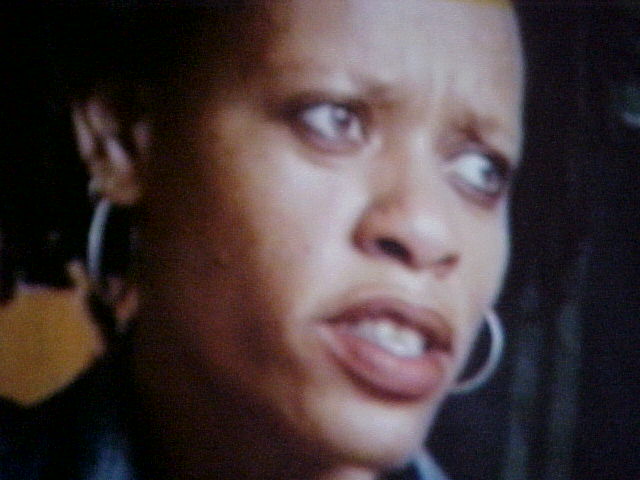
profile: Nonhlanhla Bhengu
sportwoman and marketing analyst
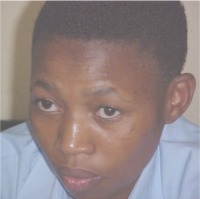
profile: Funeka Soldaat
activist and senior field worker
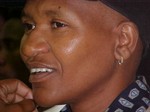
Everything must come to light
Photographic exhibition and documentary. A groundbreaking
study of same sex relationships among female Sangomas in Soweto, Johannesburg. Presented by the Gay and Lesbian Archives of
SA (GALA). Photographs by Zanele Muholi.
This 25 minutes documentary focuses on the lives of the
three dynamic same-sex identified women who are sangomas (traditional healers) living in Soweto, South Africa. They are articulate,
sympathetic women who are willing to share their stories. This is an unusual story in the realm that is often shrounded in
silence and secrecy.
Storytelling
Out of Africa - Pushing the boundaries
By Elizabeth
Khaxas (Namibia)
Falling in love with a woman has simply pushed me out further on all these borders. As a lesbian mother
I am even more on the borders of what is considered to be proper motherhood, and as a school principal I am on the borders
of an education system that promotes heterosexual conformity and imposes rigid gender norms each and every day of the school
year. As a teenager I had hoped and prayed that when I grew up my life would be orderly and ‘normal’ , that I
would marry a rich man and be politically correct all the time. However, this did not happen. Instead I became a feminist
and a lesbian, both of which are seen by many as politically incorrect and therefore unAfrican!
|
